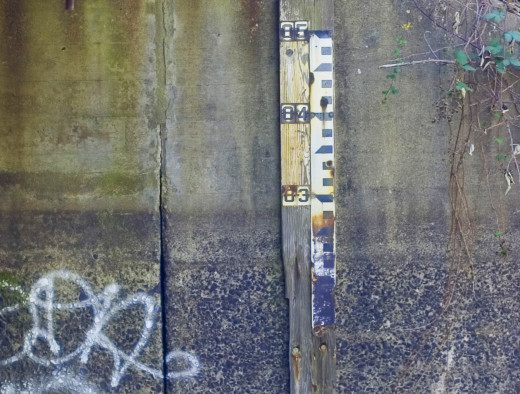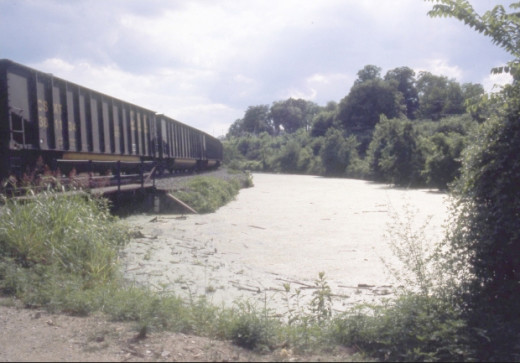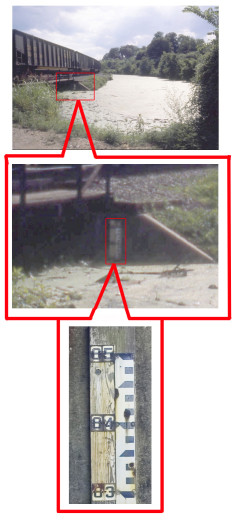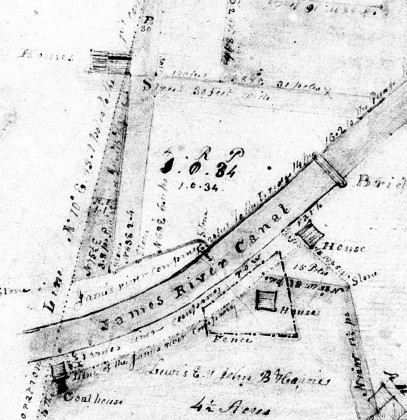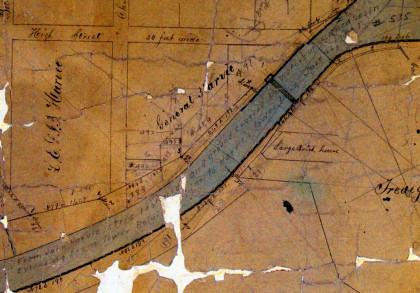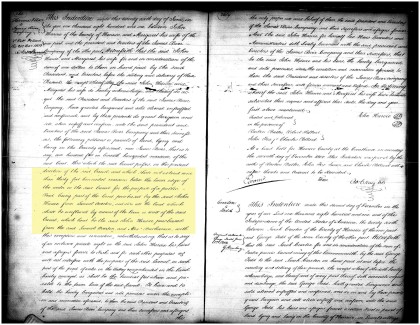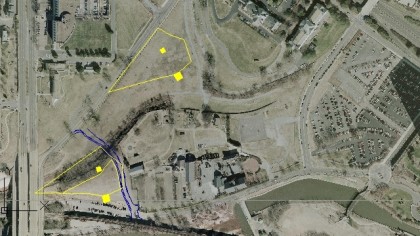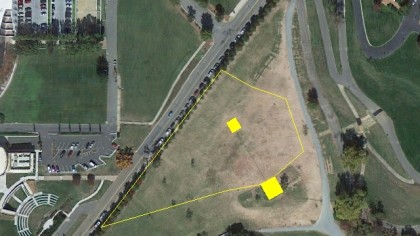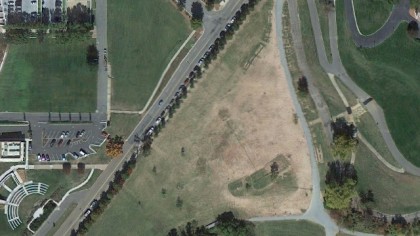This past year Venture Richmond promoted two proposals for downtown Richmond, one being a new concert amphitheater on the Kanawha Canal near Oregon Hill (codenamed ‘Tredegar Green’), another putting a baseball stadium in Shockoe Bottom. Although these two proposals may be different in scale and scope, their similarities reveal just how corrupt, flawed and misguided they really are.
Venture Richmond is a local ‘public/private partnership’. It’s stated mission is to ‘promote downtown living’. Its precursor was another corporate partnership called the Richmond Renaissance, which was partly responsible for such boondoggles as Sixth Street Marketplace and Broad Street Community Development Authority, among other questionable projects. Both Richmond Renaissance and Venture Richmond have employed Jack Berry, who by all accounts can be a very slick salesperson. So it is very telling when Berry pleads ignorance. In the case of the ‘Tredegar Green’ amphitheater plan, Berry, executive director of Venture Richmond, said he was not aware when a historic wall was illegally demolished, even though Venture Richmond was leasing and responsible for the city-owned land at the time the wall was demolished.
As for the latest rendition of the Shockoe stadium proposal (which has been made off and on for the last ten years), Jack Berry told the Times Dispatch this past September that he was͏� not aware of any involvement by Louis Solomonsky, a multimillionaire architect and real estate developer who infamously served two years in federal prison for conspiring to bribe former City Councilwoman Gwen C. Hedgepeth (for her vote in electing a new mayor in 2002 under Richmond’s previous city manager form of government ). Salomonsky, I might add, has developed properties in this neighborhood. It’s worthwhile to keep in mind that Salomonsky told local preservationist Jennie Dotts, who opposed his stadium plans back in 2004, that “there are powerful forces out there, and they can destroy you”.
In fact, neither of these plans are new, as this may be the third or fourth pitch for the Shockoe stadium, and as for the canal, the Ethyl corporation destroyed the architecturally significant 2nd Street bridge back in 1991 despite public protest and company officials derided the Kanawha Canal as ‘a stinking ditch’ (shades of the way Shockoe Creek has been treated over the decades). So if you know the full history, there is a lot to think about in regards to the motives of these projects.
Its also very telling that both plans have been pushed forward with manufactured crises. In the Kanawha Canal case, the public was told that the wonderful Richmond Folk Festival might have to fold if Venture Richmond is not allowed to build the amphitheater to its specification. Certainly there are other qualified entities besides Venture Richmond that could run a successful folk festival along Richmond’s extensive riverfront. What’s even more disturbing is how Venture Richmond lead the media and public to believe the controversy is just about the 3-day Richmond Folk Festival. In fact, Venture Richmond would like to be able to rent its proposed amphitheater to other entities year round, with no limits, which could significantly impact its neighbors in terms of litter, congestion, and noise. Venture Richmond insists it must be allowed to alter the Kanawha Canal in order for their amphitheater plan to work, yet there is plenty of space beneath the canal and further from the Oregon Hill neighborhood. This area has hosted a stage for previous festivals, including this past year’s. So, what’s the crisis? I suspect this may have more to do with future corporate ambitions for re-zoning the area than any folk festival.
In the Shockoe stadium proposal, the media and public are told that the Flying Squirrels franchise could leave possibly Richmond just like the Richmond Braves did if the proposal does not go forward (as if that would justify the costs of the proposal). In addition, the public is told that the Shockoe stadium proposal has to go forward NOW for the economic redevelopment of the Shockoe Bottom neighborhood AND the current location of the baseball stadium, the Boulevard area, to succeed. In fact, the footprint of the proposed Shockoe stadium development could easily fit in the Boulevard area with lots of space left over for more (re)development. In both cases, there are significant, very viable, publicly popular alternatives to these plans that are only now coming forward and receiving media attention.
Both the Shockoe stadium proposal and the ‘Tredegar Green’ amphitheater plan could be disastrous for historical preservation in Richmond. Even more crazy, these flawed ventures potentially damage very important slavery history while pretending to save it. Both sites, Shockoe Bottom and the Kanawha Canal, have been allowed by their landholders to become derelict and unappealing with very few indications of their historical importance. By proposing to bulldoze the canal bank, Venture Richmond claims it will “restore” the canal — the same way that it is “honoring” Richmond’s slave history by building a ball park on the Shockoe site. This comparison is especially appropriate and yet disturbing since the canal was largely built with slave labor and many of the slaves that worked on the canal were probably sold in Shockoe. In both situations, past transgressions have already done damage to these sites, and in both situations, there has not been enough archeological exploration to document what is under the ground. There are concerns that archeological requirements will be waived to make way for immediate construction. Any Richmonder who is familiar with the interstate 95 construction, the discovered James River bateaux, or the relocation of the Jacob House should understand the danger and what is potentially at stake.
And it’s not just the past, but also Richmond’s future. In both cases, Venture Richmond’s plans could block or destroy needed transportation options for Richmond (which makes the alternative plans that much more important). For decades there has been interest and plotting to properly restore the Kanawha Canal for boat use, which could potentially re-create “the blueway” (think greenway but on water) from downtown to Maymont, reconnecting the Haxall Canal to the Kanawha Canal to a renovated Byrd Park Pumphouse. In 1988, with Historic Richmond’s help, renowned architect Carlton Abbott prepared plans and cost estimates. More recently, Councilperson Parker Agelasto submitted a Capital Improvement Project budget request for rewatering the canal. Think about the tourism potential! Most cities could only dream of having this historic amenity, a working canal originally designed and presided over by George Washington himself! Yet Venture Richmond’s amphitheater plan would seriously endanger the canal’s historic and structural integrity by slicing into of its best preserved portions. If the canal can’t hold enough water, it can’t be fully restored.
In comparison, in Shockoe Bottom, there has been interest and plotting to bring the beautiful Main Street Station back to full train service, with high speed rail being an eventual goal. Unfortunately, the Shockoe ballpark proposal is more likely to hurt multi-modal transportation in Richmond than help it. Instead of a stadium, city planners should be considering a GRTC bus transfer station near Main Street Station, with an airport shuttle, that can make Shockoe Bottom a true transportation hub for the entire region. If the Shockoe stadium happens in lieu of a good bus transfer station, in the future, when you can’t easily catch a bus to and from Main Street Station train station, think back about how this public interest was bypassed.
In addition to the spurning of multimodal transportation, the Shockoe stadium plan further buries Shockoe Creek, a natural feature that served as another of Richmond’s original ‘blueways’. Think about it, while cities all over the world are recognizing the importance of urban tributaries and working hard to daylight them, Shockoe stadium proponents are lobbying to pour more concrete over Shockoe Creek. So much for local environmental stewardship.
In closing, its important to once again recognize how both of these plans are arrogantly pushed forward with no willingness for compromise. It appears that Salomonsky is a prime mover and would be a prime beneficiary of the proposed Shockoe stadium, which, according to recent polling, a large percentage of the public considers a very poor location for a ball park. Yet in the Shockoe stadium debate, proponents are that emphatic that all of the components of the plan must happen. Hmmm, I seem to remember a recent Times Dispatch article that stated that the “plan” is to swap the property that Salomonsky purchased [in the flood zone] for property on Broad St. [not in the flood zone]. A few years back, many of Salomonsky’s LLCs sued the city regarding the flooding of Shockoe Bottom; isn’t it strange now that the city is apparently working with Salomonsky, a principal of many of the LLCs that sued the city because of the flooding, to acquire the property in the flood zone for the baseball stadium? By the way, how are those traffic studies coming?
In the ‘Tredegar Green’ amphitheater case, the Times Dispatch has floated a compromise that would keep the project below the Kanawha Canal without diminishing it. The Oregon Hill Neighborhood Association has neighborly suggested that it could go along with this compromise as long as other restrictions on the amount and dates of use could be codified. Yet Venture Richmond has not only remained silent on this potential compromise, but recently submitted its original plan to the Army Corps of Engineers. This would damage the canal, which shares important historic ties to Oregon Hill. This unreasonable attitude from Venture Richmond certainly contradicts its stated mission for ‘promoting downtown living’.
Let’s cut to the chase. If Venture Richmond’s joined cabal of corporate and political power is going to continue to be wielded against Richmond’s public in order to force projects which the public does not agree with, then it’s time to stop publicly funding Venture Richmond. Other cities are moving away from this particular ‘public-private partnership’ model, which relies on special tax assessment districts for downtown. Richmond should do the same.

